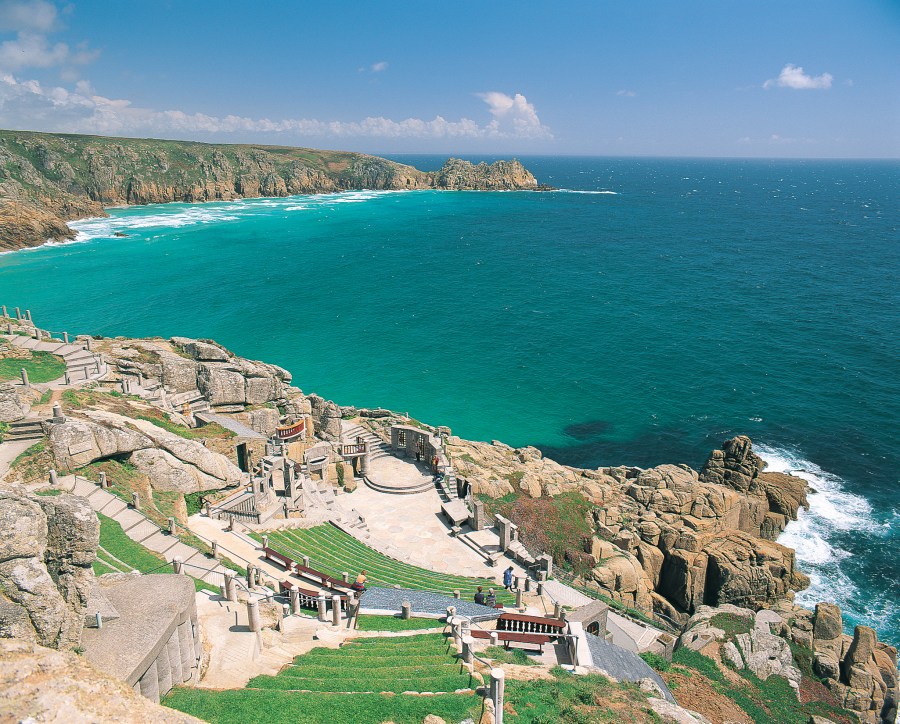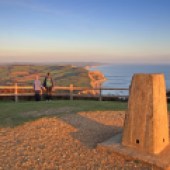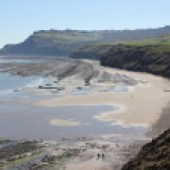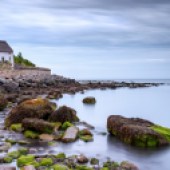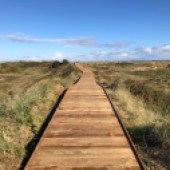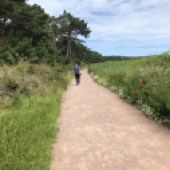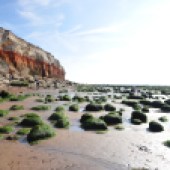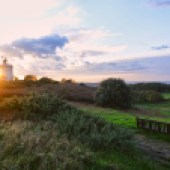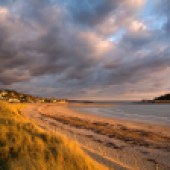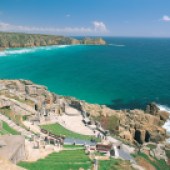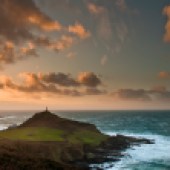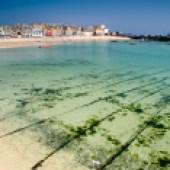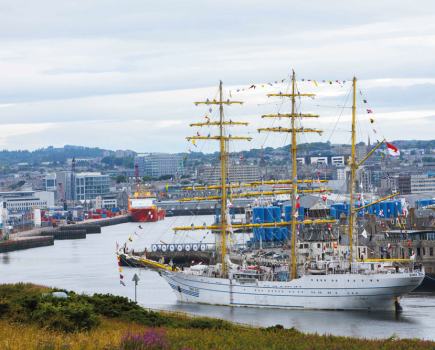Following in the footsteps of smugglers or walking through time to the age of dinosaurs, ALEX GREEN rejoices in the ultimate coastal adventures.
Living on an island, we’re drawn to the coast. As we look towards the horizon, we’re captivated by the wonders of what lies beyond, while the mysteries of the deep provide endless fascination.
Take a step closer to our shores and you might find yourself on the ultimate coastal adventure. Like a ‘choose your own adventure story’, it’s not entirely clear where the path you pick may lead. The only certainty is that there’s always something new to discover in the space where land meets the sea.
It’s this mystery and magic of our ever-changing coast that inspires so many great artists and writers. From Turner to Gormley, Murdock to Woolf, they portray a sense of longing for the coast or to merge with the sea, as though returning to the place from which we all came. In The Waves, Virginia Woolf writes, “I am made and remade continually.”
Thanks to the variety of our coastal landscapes and the Great British weather, no two days are ever the same. It is, arguably, one of the best coastlines in the world for dramatic scenery and exhilarating experiences, from fossil-hunting and finding treasures on the beach, to striding out along the clifftops. There’s an adventure to be had, however great or small, you just need to know where to look.
In this selection of the ultimate coastal adventures, it’s all about taking it slow – stepping out on foot along some of our best kept national trails, for a long weekend or a week. Take your time to fully immerse yourself in the landscape and the stories that help bring it to life. Lace up your boots, let’s go…
The Timeless Coast
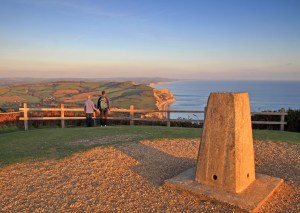
In this walk through time, millions of years of the earth’s history are revealed in the rocks that line the Jurassic Coast World Heritage Site. In just 95 miles, from Exmouth, East Devon, to Old Harry Rocks, West Dorset, you can witness three different time zones, including the Triassic, Jurassic, and Cretaceous periods. There is nowhere else in the world quite like it.
Along the way, experience precipitous cliffs and one of the closest environments you can get to a rainforest in Britain, through the undercliffs towards Lyme Regis. Quaint seaside towns line the route, some of which will be familiar from famous novels and films. Most recently, Ammonite, starring Kate Winslet as Mary Anning, who famously made the discovery of a complete Ichthyosaur skeleton when she was just 12. This marine reptile dates back 195 million years, to the age of the dinosaurs.
For a weekend’s adventure over two days, begin at Lyme Regis, where multi-coloured Georgian houses mingle with the promenade and the Cobb, a long stone harbour wall overlooking the sweeping arc of Lyme Bay. From here, the coast path leads to Charmouth (4.9km) and the Heritage Coast Centre where you can join a fossil-hunting tour of the local beach and cliffs. If you’re lucky, you may find your very own ammonite that you can keep and treasure.
Leaving Charmouth behind, the walk to Seatown (6.5km) picks up part of The Monarch’s Way – the escape route taken by Charles II after the battle of Worcester in 1651.
To top it all off, climb to the summit of Golden Cap – the highest point on the south coast at 191 metres (627 feet). On a clear day, you can enjoy awe-inspiring views extending across Lyme Bay to Dartmoor and ahead to the Isle of Portland. Continue onto the pretty village of Seatown where the Anchor Inn provides a walkers’ welcome with hearty good food served right on the beach.
DON’T MISS
The Lyme Regis Museum, located on the site of Mary Anning’s house and shop, where you can learn more about the area’s natural history, as well as the many writers who have found inspiration in the town. lymeregismuseum.co.uk
WHERE TO STAY
The Alexandra is a beautiful boutique hotel, set within private gardens overlooking Lyme Bay and the famous Cobb harbour. hotelalexandra.co.uk
The Heritage Coast
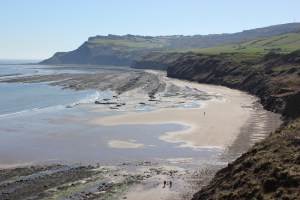
Picture the past along the Cleveland Way in North Yorkshire, from the traditional fishing ports tucked away in sheltered coves to the gothic castles with views out to sea. While the full length of this national trail follows a horseshoe shape from the moors to the sea, the coastal stretch takes you from Saltburn-by-the-Sea to the rugged cliffs of Filey.
For the ultimate weekend adventure taking in the highlights, begin in Staithes, a cosy harbour town that was once home to a well-known community of impressionist painters. Leaving the colourful fisherman’s cottages behind, ascend the cliffs to Runswick Bay as you make your way towards Whitby (18km). Along the way, you’ll pass some of best beaches in the country for beachcombing, including Upgang Beach. Time your route at low tide and look out for shells, giant seaweed, ammonites, mermaid’s purses, and Whitby Jet.
Whitby’s full of seaside charm with a fascinating history. It’s the hometown of explorer Captain Cook and has literary links to Bram Stoker’s Dracula, which famously features the ruins of Whitby Abbey. Enjoy the renowned fish and chips by the pier and a pint of locally brewed beer, Striding the Riding, at one of the olde worlde inns.
Leaving Whitby behind walk to Robin Hoods Bay (10.5km), once a thriving fishing community and a bolthole for smugglers. A network of hidden passageways leads from the beach to the village with its quaint fisherman’s cottages along narrow, cobbled streets.
DON’T MISS
The Cook Memorial Museum is based in the 17th century house in Whitby where cook lodged as an apprentice. Hear tales of Cook’s historic voyages and seamanship that gave him the reputation as one of the greatest adventurers that ever lived. cookmuseumwhitby.co.uk
WHERE TO STAY
The White Horse and Griffin is a 450-year-old coaching Inn that was used as a meeting place for explorers Captain James Cook and William Scoresby, who hired and fixed their crews from the building. whitehorseandgriffin.com
The Big Skies Coast
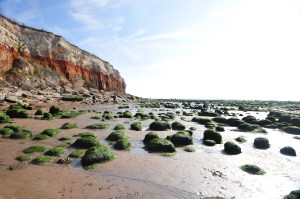
The Norfolk Coast Path runs from Hunstanton round to Sea Palling, taking you through low sea cliffs, charming seaside towns and extensive sandy beaches and dunes.
This is possibly one of the most accessible stretches of coastline in Britain, relatively flat with new and improved paths at Holme-next-the-Sea, Wells-next-the-Sea and Holkham, making it suitable for mobility aids and pushchairs in parts. With few ascents and descents, keen walkers can cover longer distances and still take time to enjoy the big open sky views.
For the ultimate long weekend adventure, follow the coast path from Old Hunstanton to Cromer over three or four days. Between Hunstanton and Thornham, stop off to see the dunes at Holme before making your way to Brancaster Staithe (18.5km).
From Brancaster to Wells-next-the-Sea (20km), walk through quintessential Norfolk coastal seascapes along boardwalks, with views of salt marshes and sand dunes and the sound of reeds swaying in the breeze. Feel the sand between your toes at Holkham and see the classic English beach huts, with their pinewood backdrop. When you reach Wells, have a go at crabbing on the quayside or relax in a cosy seaside Inn.
Between Wells and Weybourne (26km) you can get closer to the wildlife with a seal-spotting boat trip or birdwatching at the Cley Marshes nature reserve.
From Weybourne to Cromer (12.8km), you experience the highest point on the Norfolk coast, with panoramic views out to sea and over the North Norfolk Railway. When you reach the Victorian seaside town of Cromer with its picturesque pier, visit the Fisherman’s Heritage Centre, and sample the world-famous Cromer crab.
DON’T MISS
While the Norfolk Coast is famous for its big skies by day, its night skies are out of this world. Home to four Dark Sky Discovery Sites. norfolkcoastaonb.org.uk/exploring/dark-sky-discovery-sites
WHERE TO STAY
Kelling Heath Holiday Park holds equinox stargazing parties for the ultimate intergalactic adventure. kellingheath.co.uk
The Wild West Coast
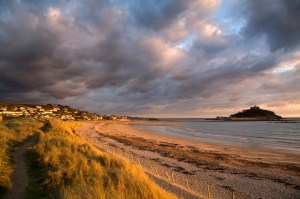
The far south west tip of England, from Mount’s Bay to St Ives, is one of the wildest, most magical coastal adventures to be had anywhere in the world. On every exposed clifftop and in tucked away, hidden coves, there are tales about the saints, sinners, myths, and legends that characterise this coastline.
It follows part of the South West Coast Path, the longest route in the family of national trails. It can take around 7-8 weeks to complete the entire route, from Minehead in Somerset to Poole in Dorset, so this makes for the ultimate week-long adventure taking in some of the highlights.
Beginning in Penzance, stride out across the causeway at low tide to St Michael’s Mount, following in the footsteps of pilgrims and a legendary giant. Evidence of an ancient forest has been found here, while the legend of the lost lands of Lyonesse speaks of whole towns and villages being submerged by the sea.
As you follow the coast path to Porthcurno (18.5km), you pass the fishing ports of Newlyn and Mousehole, described by Dylan Thomas as “the loveliest village in Cornwall”. At Porthcurno, The Minack Theatre is cut from the rocky cliffs above the beach. If you time it right, you could enjoy an evening performance at this open-air theatre, with the breaking waves as a backdrop.
From Porthcurno to Cape Cornwall (18.4km), you pass the most westerly point of Britain at Land’s End, before reaching the relics of the tin mines dotted along this granite coast – a reminder of the industrial past that forms part of the Cornish Mining World Heritage Site.
Leaving Cape Cornwall behind where the Atlantic currents split, strike out towards Zennor (18km) before the last leg to St Ives (10.4km). Tales of mermaids and their lovers lost at sea can be heard whispering on the waves along this stretch. There’s a real feeling of remoteness upon these lonely clifftops. It’s just you and the seabirds circling overhead, with the occasional sighting of a seal on the rocky outcrops.
Arriving in St Ives after this wild experience, you may see everything in a new light. The town became popular with artists and writers thanks to the luminous quality of its pure air and bright light, reflecting off the turquoise waters and golden sands. Visit Tate St Ives and the Barbara Hepworth Museum and Sculpture Garden to learn more about the painters and potters that made St Ives the place it is today.
WHRE TO STAY
The Godolphin Arms is situated on the beach at Marazion in Mount’s Bay and commands spectacular views of St. Michael’s Mount and out to sea. thegodolphin.com
DON’T MISS
The Leach Pottery in St Ives is the original home and workplace of revered potter Bernard Leach. Guided tours bring the pottery’s history to life with stories about the people and the pottery that play a part in its 100-year history. leachpottery.com
GETTING AROUND
There are 16 long-distance walking routes in the family of national trails that criss-cross the country. Each one features amazing scenery and wildlife and a variety of shorter routes that cater for every coastal adventurer.
Accessible walks on well-maintained paths are available for those with limited mobility and young families. There’s also a new England Coast Path in development, which will become the longest coast path in the world.
For linear walks, it’s recommended you park at one end and take a bus, train, or taxi ride to the start so you can walk back to your car or accommodation. Each national trail features the acorn symbol on signposts, making it easy to follow.
For the most part, while following the coastal paths, just keep the sea on one side and follow the waymarked route. Always check the website for each trail before setting out, as there’s often diversions in place due to the nature of these shifting shores. Take plenty of water, suitable clothing, and a map – you never know when you might need it. Happy walking! nationaltrail.co.uk.

